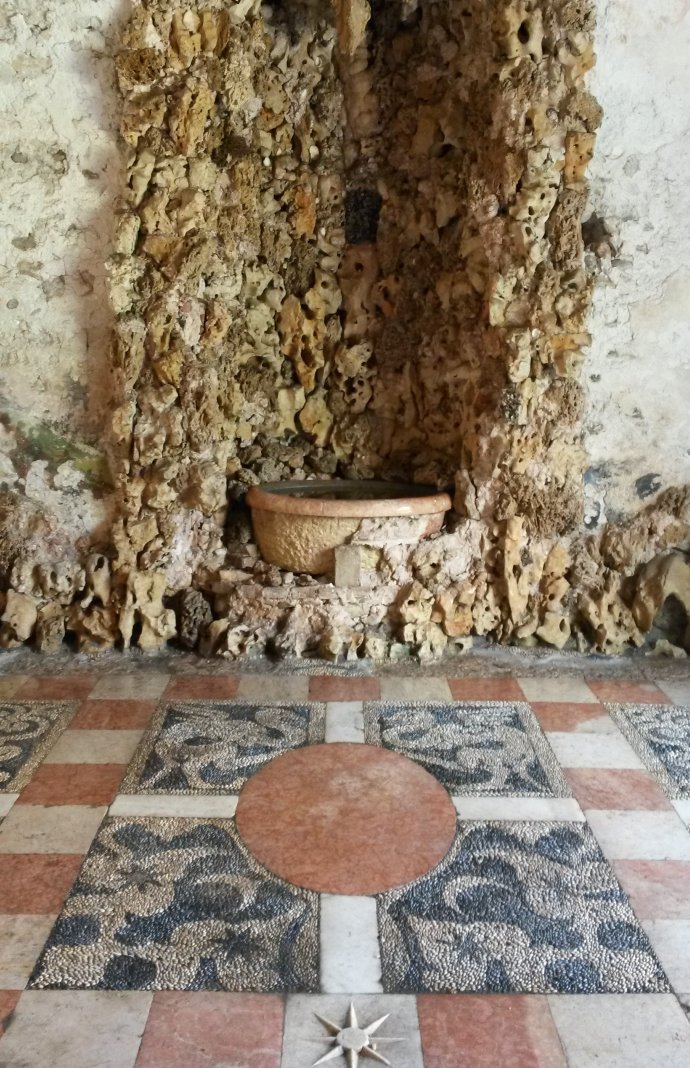Wonderful Long-Lived Nymphs In Greek And Roman Mythologies
A. Sutherland - AncientPages.com - Nymphs (in Greek "nýmphē") were long-lived, wonderful female spirits of the natural world who were invisible to mortals but occasionally could be heard by humans.
But what did these minor goddesses have in common?
A nymph signed "Blanche Paymal-Amouroux (1860 – 1910)". Wikimedia Commons – Public Domain
They were divided into Oceanids, Nereids, Naiads, Dryads, Hamadryads, and Oreads, and the domain of all of them was a wilderness known to be rarely modified by human activity.
The ocean and the sea were the domain of the Okeanids, the daughters of the Titans Oceanus and Tethys. According to Hesiod's "Theogony," they were parents of six thousand children (three thousand sons, three thousand daughters), the largest single source of nymphs in mythology. The fifty Nereids were offspring of Nereus, an old deity of pre-Olympic origin, and his wife Doris. The Nereids dwelt with their father in the kingdom of the Aegean Sea.
The springs and rivers belonged to the Naiads, and there was no river or spring in which there was not some Naiad nymph. The Dryads lived in the forest, particularly in sacred oak groves. The Limoniades (Leimoniads) were the Greek spirits of meadows and flowers. The trees belonged to the Hamadryads, who were associated with the fate of the trees they cared for. These nymphs were born bonded to specific trees like oak, poplar, or spruce.
God Hermes, baby Dionysos, and two nymphs depicted on a bell krater, 470 B.C-450 B.C. Credit: British Museum
The Hamadryad was permanently attached to her tree and was supposed to have its own. After its death, she followed it, too. The mountains with caves were the domain of the Oreads, who were believed to be the daughters of Gaia. However, according to Homer, Zeus was usually considered the father of nymphs.
At the same time, different parents were assigned to specific types of nymphs, divided into various groups depending on where they lived.
And so, the nymphs who were protectors of the element of water like the Okeanids, Nereids, and Naiads were associated with their father Oceanus, who was also grandfather of the Nereids, and a relative of the Naiads. The latter were also said to be the children of a local god at a particular river.
The ancient people did not build temples dedicated to the nymphs, but they used to place their statues in caves, and numerous devotional gifts were suspended from the trees as a tribute to them.
The farmers generously offered the first yield from their fields and made sacrificial offerings of oil and honey. A soldier returning home from the battlefield would offer the nymphs his spear or a helmet, while young married women would give them childhood dolls. Other people brought fruits and cakes to their caves.
Greeks had a deep respect for the nymphs, and a wonderful tradition originates from the ancient rocky terrains of Greece, where water has always been priceless due to its scarcity. The nymphs often led hikers and travelers to refreshing springs. One legend says that after a few hour-long journeys in the tiring heat, a wanderer found some water from a spring; he knelt, drank, and then, bending a branch of a tree that grew above the spring, hung his cup on it as a gift of gratitude to the nymphs dwelling in the realm of water.
One ancient belief says that the nymphs watched over the purity and abundance of water. Some springs had healing properties, so the nymphs were often considered goddesses of health, who lived a very long time and never aged, but they eventually died, too. It is also said that they used divination to predict the future.
They lived either in the springs or in caves with entrances facing north and covered with vegetation. Their dwelling places were usually springs or caves with entrances covered with vegetation and facing north. Another entry facing south was destined for the gods and led directly to the chambers, where stone weaving workshops were located.
Nymphs were busy making beautiful fabrics dyed with the purple of the sea.
Grotta-Ninfeo, 1590 circa, Villa Nichesola-Conforti, Ponton di Sant'Ambrogio di Valpolicella (Verona), Italy. Image credit: Giuseppeconforti - CC BY-SA 4.0
After a busy day, it was time to rest, so Artemis, along with twenty Amnisides Nymphs of the river Amnisus in Crete would call them together for night dances.
Nymphs often accompanied gods and idols and frequently acted as attendants for other divinities, including Apollo,, Hermes, and in the retinue of Dionysus.
Even though the nymphs are associated with trees, water, and mountains in literature, archaeological evidence exists for their cult practice within extramural caves.
One of the fascinating ancient Greek places related to the nymphs was once - Corinth, where "the Greek cult of the nymphs seems to be focused at water sources within or near the city itself…and the nymphs were an important and visible part of the religious lives of the Corinthians from the Archaic to the Early Hellenistic periods.." 1
The cult of the nymphs had a profound and widespread impact on the culture of ancient Greece. Another place was Attica, where the popularity of nymphs significantly increased after the Battle of Marathon (490 BC). Pan, the god of the wild, shepherds and flocks, rustic music and companion of the nymphs, was introduced in Athens. Thereafter, he and the nymphs were often worshiped as a group, and the Athenians built cave sanctuaries dedicated to them.
Entrance to the original nymphium on Rhodes. Image credit: Thanasis Christodoulou - CC BY-SA 4.0
The Romans also had a tradition of paying tribute to the nymphs through structures known as nymphaea. These were essentially shrines dedicated to these mythical entities. In the lively city of Rome, these shrines frequently featured spectacular displays featuring cascading water.
Therefore, they served more as a tribute to the owner's wealth than a symbol of the nymphs' worship. However, these shrines maintained their sanctity and religious significance in smaller Roman settlements.
Among educated Romans, these nymphs' influence was quite limited, with their presence mostly confined to being water deities.
It's, therefore, highly unconvincing that the classic mythologies written by Roman poets significantly impacted the individual rituals and cults dedicated to nymphs, particularly those celebrated by rural folks near the springs and crevices of Latium, the region of central western Italy.
Written by – A. Sutherland - AncientPages.com Senior Staff Writer
Copyright © AncientPages.com All rights reserved. This material may not be published, broadcast, rewritten or redistributed in whole or part without thexpress written permission of AncientPages.com
Expand for referencesReferences:
- Theodora Kopestonsky. “The Greek Cult of The Nymphs at Corinth.” Hesperia: The Journal of the American School of Classical Studies at Athens 85, no. 4 (2016): 711–77.
Hesiod, Theogony (346-709
Cotterell, Arthur. A Dictionary of World Mythology
Grimal, Pierre, The Dictionary of Classical Mythology
More From Ancient Pages
-
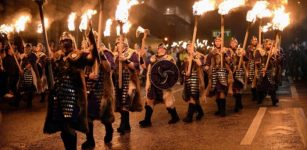 Hogmanay: Scotland’s New Year Celebration Inherited From The Vikings
Ancient Traditions And Customs | Dec 31, 2016
Hogmanay: Scotland’s New Year Celebration Inherited From The Vikings
Ancient Traditions And Customs | Dec 31, 2016 -
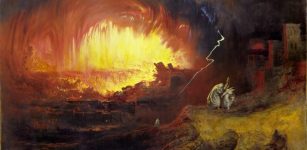 Ruins Of Sodom, Lost Ancient Biblical City Destroyed By God – Uncovered
Archaeology | May 5, 2015
Ruins Of Sodom, Lost Ancient Biblical City Destroyed By God – Uncovered
Archaeology | May 5, 2015 -
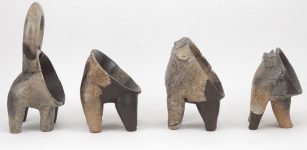 Evidence Of 7,200-Year-Old Cheese Production Found On Dalmatian Coast
Archaeology | Sep 7, 2018
Evidence Of 7,200-Year-Old Cheese Production Found On Dalmatian Coast
Archaeology | Sep 7, 2018 -
 A 2,500-Year-Old Planned City In Tarighat, Chhattisgarh, India
Civilizations | Oct 8, 2014
A 2,500-Year-Old Planned City In Tarighat, Chhattisgarh, India
Civilizations | Oct 8, 2014 -
 First Pompeiian Human Genome Sequenced Fron An Individual Who Died After The Eruption Of Mount Vesuvius In 79 C.E
Archaeology | May 26, 2022
First Pompeiian Human Genome Sequenced Fron An Individual Who Died After The Eruption Of Mount Vesuvius In 79 C.E
Archaeology | May 26, 2022 -
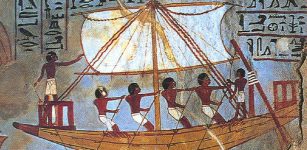 Mysterious Sherbrooke Stones – Did Africans Visit North America 2,500 Years Ago?
Artifacts | Nov 23, 2017
Mysterious Sherbrooke Stones – Did Africans Visit North America 2,500 Years Ago?
Artifacts | Nov 23, 2017 -
 Unique And Priceless Large Roman Sculptures Found At Carlisle Cricket Club
Archaeology | May 25, 2023
Unique And Priceless Large Roman Sculptures Found At Carlisle Cricket Club
Archaeology | May 25, 2023 -
 Medieval Celtic Mystery Written In Konungs Skuggsja – The King’s Mirror
Featured Stories | Sep 13, 2018
Medieval Celtic Mystery Written In Konungs Skuggsja – The King’s Mirror
Featured Stories | Sep 13, 2018 -
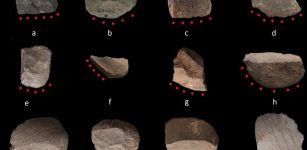 Earliest Evidence Of Rice Harvesting Provided By China’s Ancient Stone Tools
Archaeology | Dec 8, 2022
Earliest Evidence Of Rice Harvesting Provided By China’s Ancient Stone Tools
Archaeology | Dec 8, 2022 -
 Silent Witnesses: Further Dark Secrets Of Batavia Shipwreck – Uncovered
Archaeology | May 11, 2023
Silent Witnesses: Further Dark Secrets Of Batavia Shipwreck – Uncovered
Archaeology | May 11, 2023 -
 Mystery Of The Knights Templar – Did A Secret Ancient Meeting Determine The Real Purpose Of The Christian Knights? Part 1
Featured Stories | Aug 20, 2019
Mystery Of The Knights Templar – Did A Secret Ancient Meeting Determine The Real Purpose Of The Christian Knights? Part 1
Featured Stories | Aug 20, 2019 -
 Mysterious Ancient Falicon Pyramid And Its Complex Obscure History
Featured Stories | Nov 28, 2018
Mysterious Ancient Falicon Pyramid And Its Complex Obscure History
Featured Stories | Nov 28, 2018 -
 2,500-Year-Old Olmec Related Mexican Cave Paintings Are Now Restored And Protected
Civilizations | Sep 18, 2015
2,500-Year-Old Olmec Related Mexican Cave Paintings Are Now Restored And Protected
Civilizations | Sep 18, 2015 -
 Abduction Of Idun, Goddess-Keeper Of Golden Juvenile Apples In Norse Mythology
Featured Stories | Nov 16, 2019
Abduction Of Idun, Goddess-Keeper Of Golden Juvenile Apples In Norse Mythology
Featured Stories | Nov 16, 2019 -
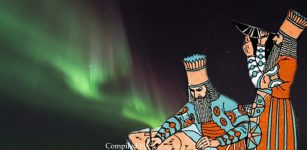 Evidence Of Unusual Solar Activity Discovered On Ancient Cuneiform Tablets
Archaeology | Oct 16, 2019
Evidence Of Unusual Solar Activity Discovered On Ancient Cuneiform Tablets
Archaeology | Oct 16, 2019 -
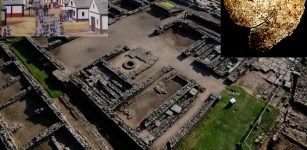 1,400-Year-Old Christian Chalice With Etched Symbols Found In Rubble At Vindolanda Fort, Britain
Artifacts | Sep 1, 2020
1,400-Year-Old Christian Chalice With Etched Symbols Found In Rubble At Vindolanda Fort, Britain
Artifacts | Sep 1, 2020 -
 Draken Harald Hårfagre – World’s Largest Viking Ship On Its Way To U.S And Canada
News | Apr 27, 2016
Draken Harald Hårfagre – World’s Largest Viking Ship On Its Way To U.S And Canada
News | Apr 27, 2016 -
 New Theory On “Dry Moat” At The Pyramid Of Pharaoh Djoser
Archaeology | Jul 3, 2019
New Theory On “Dry Moat” At The Pyramid Of Pharaoh Djoser
Archaeology | Jul 3, 2019 -
 Old Sword Decorated With Inscription And Related To 1173 Battle Of Fornham – Unearthed
Archaeology | Apr 8, 2017
Old Sword Decorated With Inscription And Related To 1173 Battle Of Fornham – Unearthed
Archaeology | Apr 8, 2017 -
 Igaluk – Powerful Eskimo Moon God That Directs Natural Phenomena
Featured Stories | Feb 13, 2019
Igaluk – Powerful Eskimo Moon God That Directs Natural Phenomena
Featured Stories | Feb 13, 2019



